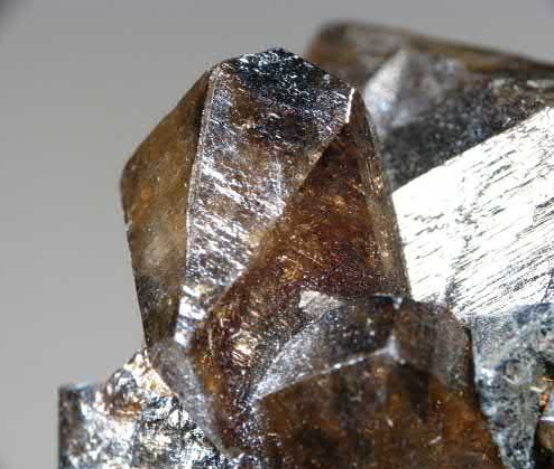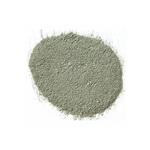Natural Distribution of Tin Around the World
May 29,2024
Types of Tin Mineral
Tin is the 49th most abundant element in Earth's crust, representing 2 ppm compared with 75 ppm for Zn, 50 ppm for Cu, and 14 ppm for Pb. Tin does not occur as the native element.
Cassiterite (SnO2) is the only economically important source of tin, though small amounts of tin are recovered from complex sulfides such as stannite (Cu2FeSnS4), cylindrite (Pb3Sn4FeSb2S14), franckeite ((Pb,Sn)6FeSn2Sb2S14), canfieldite (Ag8SnS6), and teallite (PbSnS2). Minerals containing tin are nearly always associated with granite rock (a common type of felsic intrusive igneous rock that is granular and phaneritic in texture), typically at a level of around 1% tin oxide content.

Figure 1. Translucent brown twinned cassiterite, SnO2, crystals from 1.3 to 2 cm.
Due to the higher specific gravity of tin dioxide, about 80% of mined tin is from secondary deposits found downstream from the primary lodes. Tin is frequently recovered from granules washed downstream in the past and deposited in valleys or the sea. The most economical ways of mining tin are dredging, hydraulicking, or open pits.
Distribution
The majority of the world's tin is produced from placer deposits, which can contain as little as 0.015% tin. Most of the tin has been mined in China, Indonesia, Peru, Bolivia, and Brazil. Approximations of tin production have historically varied with the dynamics of economic viability and the progress of mining technologies, but it is estimated that, at recent consumption rates and technologies, the Earth will run out of mineable tin in 40 years.
New Source of Tin
Secondary, or scrap, tin is now increasingly an important source of the metal. Recovery of tin through secondary production, or recycling of scrap tin, is growing fast. While the United States has neither mined since 1993 nor smelted tin since 1989, it was the largest secondary producer, recycling nearly 14,000 tons in 2006. New deposits have been reported in southern Mongolia, and in 2009, new deposits of tin were discovered in Colombia. Tin is obtained through carbothermic reduction of the oxide ore with carbon or coke. Both reverberatory (a metallurgical or process furnace that isolates the material being processed from contact with the fuel, but not from contact with combustion gases. The term reverberation is used here in a generic sense of rebounding or reflecting, not in the acoustic sense of echoing.) and electric furnace can be used.
- Related articles
- Related Qustion
- Tin Crystal Nov 21, 2023
A tin is called gray tin and has the property of the semiconductor with the diamond structure of a lattice constant of a=0.649 nm and atomic distance 0.28 nm.
Yttrium is found in most rare-earth minerals; it is found in some uranium ores but is never found in the Earth’s crust as a free element.....
May 29,2024Inorganic chemistryNaturally occurring Pd consists of seven isotopes, six of which are stable.....
May 29,2024Inorganic chemistryTin
7440-31-5You may like
- Why is Phosphoric acid used in food?
Aug 2, 2024
- Synthesis of Aluminium potassium sulfate dodecahydrate (Alum)
Aug 1, 2024
- Malachite synthesis
Jul 31, 2024
- Tin Powder
-

- $40.00 / 1kg
- 2024-05-09
- CAS:
- Min. Order: 1kg
- Purity: 98%
- Supply Ability: 20T
- tin ingot
-

- $1.00 / 1g
- 2019-09-02
- CAS:
- Min. Order: 1g
- Purity: 99.99%
- Supply Ability: 1000 tons
- Sn
-

- $1.00 / 50g
- 2019-07-06
- CAS:7440-31-5
- Min. Order: 50 g
- Purity: 99.9%
- Supply Ability: 20kg





